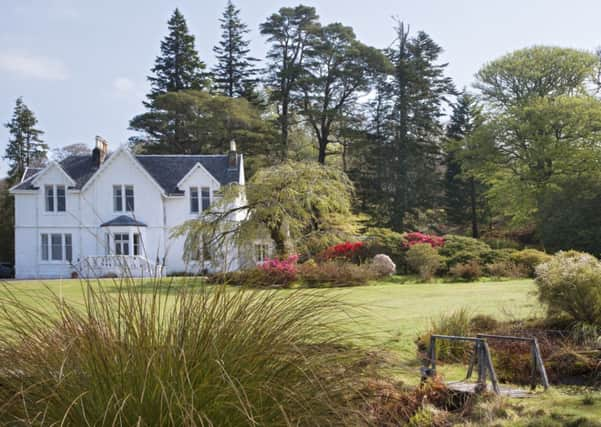Gardens: Druimneil’s 25-year restoration


WHEN Janet Glaisher left her family home on Mull 24 years ago, she decided she needed a challenge. In Druimneil, a Victorian house and ten-acre garden in Port Appin, she found one.
It was a classic restoration project – the original features were there, but in need of a lot of work to bring them back to glory. “Druimneil was a lovely, but sad-looking, house, built in 1850, with ten acres of what had once been a lovely garden,” recalls Janet. This included a walled garden “totally empty of life”. But she could see even the wall itself was special, being perhaps 100 years older than the house.
Advertisement
Hide AdAdvertisement
Hide AdOn the edge of the mainland overlooking Loch Linnhe, Druimneil has spectacular views across to Morven and Lismore. The garden itself includes natural features that gave Janet a ready-made base on which to restore a sweeping and varied garden. “There is no landscaping needed here as there are four separate small hills rising at different points around the house, with steps and walks linking the whole so people can wander among trees and shrubs,” she says. “There has been a massive amount of work done here over the years, as there was an infestation of Rhododendron ponticum, almost all of which is now eradicated making way for more interesting trees and shrubs.”
Like all gardens in the west, Druimneil benefits from a generally milder climate. Gardener Andy Ritchie has been at Druimneil for 20 years and concentrates on plants that do well in acid soil. As well as a large collection of rhododendrons and azaleas, woodland-loving primulas, hellebores and meconopsis blue poppies thrive.
“Andy has transformed the walled garden, where he grows vegetables and fruit,” says Janet, who also restored the accommodation at Druimneil into a luxury guest house and self-catering cottage.
A herbaceous border runs the length of the south-west wall to give colour and interest through the main part of the growing season. The beneficial climate produces ideal growing conditions, allowing Andy to grow plants in polytunnels to sell throughout the year. Extra protection from the weather makes a big difference to productivity in the vegetable garden too. Andy keeps the young plants in the greenhouse in for as long as he can in order to let the ground warm up.
Spring is when the gardens are at their best, says Janet. The walks are lined by banks with masses of daffodils and vivid blue camassias, while the rhododendrons and azaleas bring large blocks of colour to the frame.
The elevation of the garden allows visitors to climb up to about 200ft above sea level, looking back over the house towards the loch and across to the islands. A network of paths means all parts of the garden are easily accessible.
Although the climate is milder, Druimneil’s position is exposed to the coastal weather. Janet recalls a huge storm about 20 years ago that devastated large parts of the country, and left Druimneil with considerable damage.
“In a strange way, it did us a favour, as it brought down several very elderly firs which allowed us to open up an ancient disused pond, which is now a series of three ponds growing a variety of bog and water plants. The larger one has a sculpture by David Wynne, adding a different dimension to that part of the garden.”
Advertisement
Hide AdAdvertisement
Hide AdExpanses of lawn are planted with beds of grasses, herbaceous and specimen trees, giving a rich variety of interest, height and texture. The various elevations and the presence of many more trees mean constantly changing views, and make for a garden that has plenty shade and light. Unlike many high-Victorian houses, this one is anything but a gloomy pile. Druimneil’s whitewashed walls reflect the light back through the trees and complement the airy, coastal views. Inside, the house represents the best of the mid-Victorian architecture, with high ceilings that give the rooms a feeling of space and elegance.
It’s a perfectly peaceful haven from the world, one which Janet is delighted to share. “We like to think the overall peace and tranquillity of the whole of Druimneil reflects on the guests. I get a great enjoyment from people staying here and I get a sense that they too benefit from the peace and quiet in this fast-moving and busy world.
“I personally feel very privileged to have had the opportunity to restore something so special. It is impossible not to love what I do.”
Druimneil House can cater for up to six guests in the main house and also has a self-catering cottage (www.appinaccommodation.co.uk)